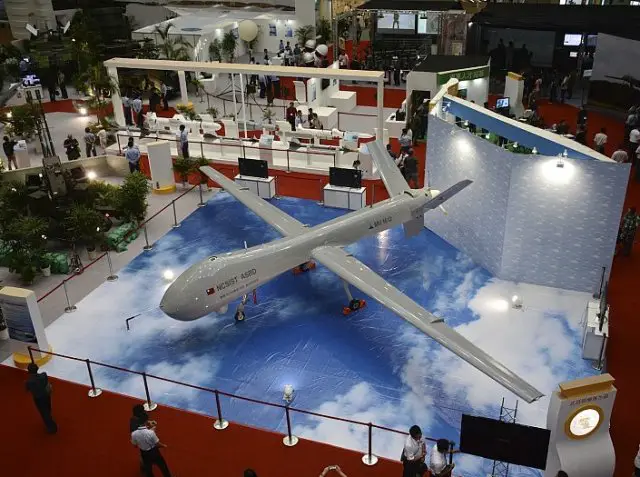| a | |||
|
World Aviation Defense & Security News - Taiwan
|
|||
| Taiwan's Chung-Shan Institute of Science and Technology unveils new MALE UAV prototype | |||
|
Taiwan's National Chung-Shan Institute of Science and Technology recently unveiled an unmanned aerial vehicle (UAV) it developed at the Taipei Aerospace & Defense Technology Exhibition, reports the Chinese-language newspaper Want Daily. The new MALE UAV was displayed during the Taipei Aerospace & Defense Technology Exhibition, which was being held at the Taipei World Trade Center from Aug. 10-13.
|
|||
|
|
|||
 CSIST's new MALE unmanned aerial vehicle prototype unveiled during TADTE 2015 in Taiwan CSIST's new MALE unmanned aerial vehicle prototype unveiled during TADTE 2015 in Taiwan |
|||
|
|
|||
|
CSIST showed off the first prototype of its medium-altitude long-endurance unmanned aerial vehicle (UAV). This is actually the largest UAV ever produced by CSIST. There were no details regarding performance, but the structure is similar to the MQ-9 Reaper with the same tail configuration and rear propeller.
The institute rivals its Chinese counterparts in the development of UAVs, said Alex Ma, head of the institute's aeronautical system division. The institute's UAV has an autopilot capable of taking off and landing unassisted, he said. There is no evidence suggesting that the Shendiao, the latest UAV from China's "Condor" drone series, has the same capability, Ma added. Although the institute has yet to name the UAVs it has been developing, the institute's staff members have dubbed them "big airplanes," said Ma. In addition to its autopilot, Taiwan has developed other UAV technology such as the coordination of multiple aircraft by a single pilot, retransmitting signals through a UAV, remote-controlling UAV through the internet and transmitting real-time images from a UAV, said Ma. The technology is designed for UAVs carrying out reconnaissance missions. He said the institute will not consider installing weaponry on the UAVs before ensuring their satellite-navigation, communication and take-off-and-landing capabilities are fully operational. The institute's UAVs can be equipped with auto-cannons or missiles since they are able to carry over 500 kg. Officials at the institute said the institute has been building multiple large drones, likely 12 of them. The one on display at the exhibition has the serial number MU-162. Another UAV used in the institute's flight test held at an air force base in Taitung in eastern Taiwan has the serial number MU-1611. |
|||
















